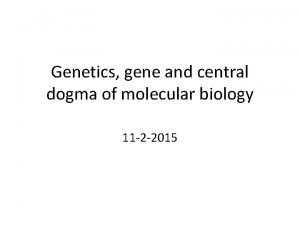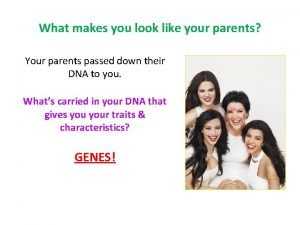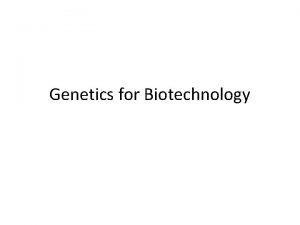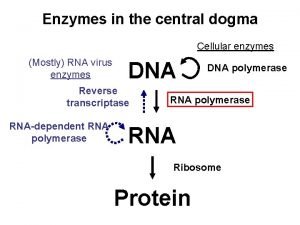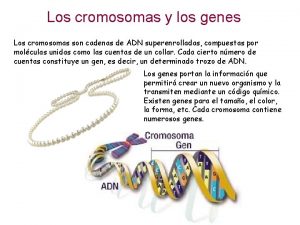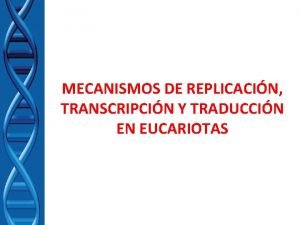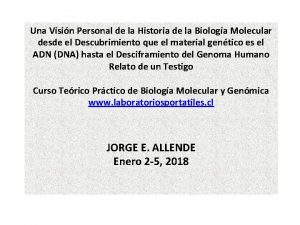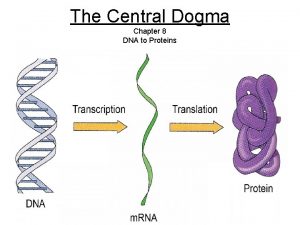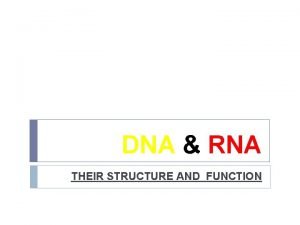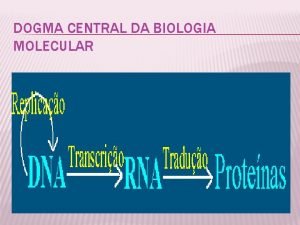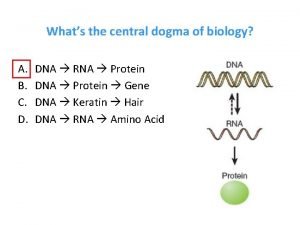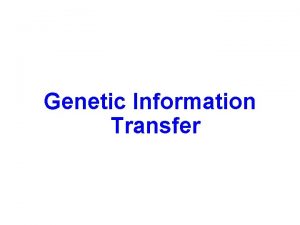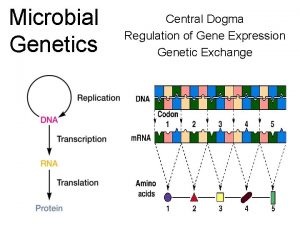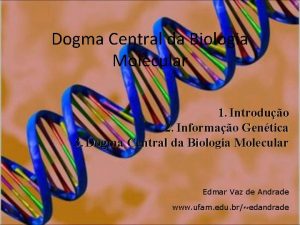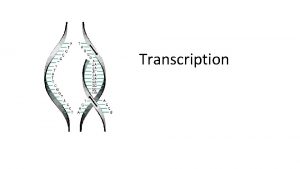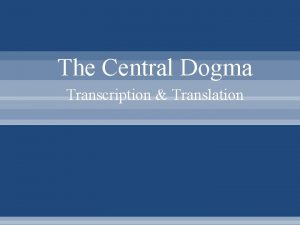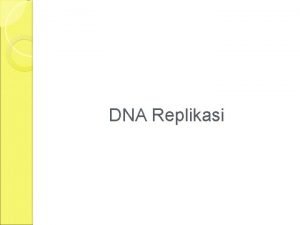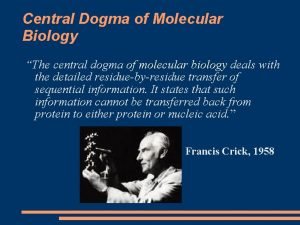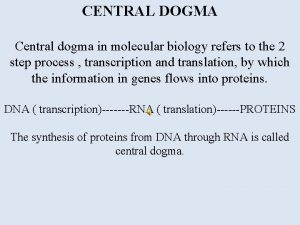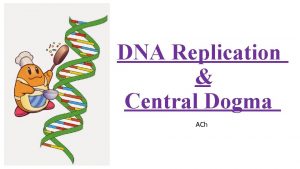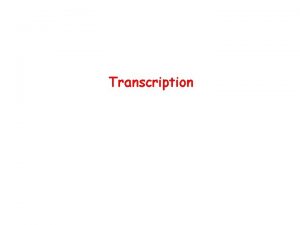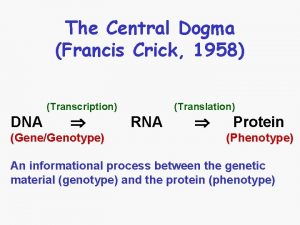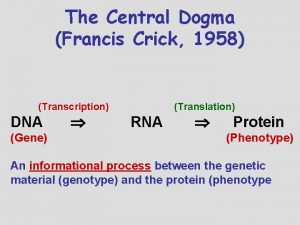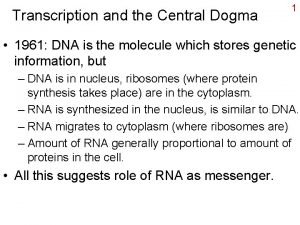From DNA to Proteins Transcription Central Dogma A













- Slides: 13

From DNA to Proteins Transcription

Central Dogma A termed coined by Francis Crick. The central dogma of molecular biology is an explanation of the flow of genetic information within a biological system. • Replication copies DNA • Transcription: The process by which DNA makes RNA • Translation: The process by which RNA makes proteins

Central Dogma • Replication copies DNA • Transcription converts DNA message into intermediate molecule, called RNA • Translation interprets an RNA message into string of amino acids, called polypeptide (protein)

In prokaryotic cells processes take place in cytoplasm In eukaryotic cells processes are separated a. Replication and Transcription in nucleus b. Translation occurs in cytoplasm (ribosome)

RNA acts as messenger between nucleus and protein synthesis in cytoplasm (ribosome) RNA differs from DNA in three significant ways a. Sugar in RNA is ribose not deoxyribose b. RNA has the base uracil in place of thymine c. RNA is single stranded not double

Transcription copies sequence of DNA (one gene) and is catalyzed by RNA polymerase a. DNA begins to unwind at specific site (gene)

b. Using one strand of DNA, complementary strand of RNA is produced c. RNA strand detaches and DNA reconnects

Transcription produces 3 kinds of RNA a. Messenger RNA (m. RNA) code for amino acid b. Ribosomal RNA (r. RNA) forms part of ribosome c. Transfer RNA (t. RNA) brings amino acids from the cytoplasm to a ribosome to help make growing protein

The transcription process is similar to replication a. Both occur in nucleus b. Both involve unwinding of DNA c. Both involve complementary base pairing

Amino acids are coded by m. RNA base sequences A codon is a sequence of three nucleotides that codes for an amino acid.

RNA could code 64 different combinations There are 20 amino acids used to build proteins in human body and most other organisms

Many amino acids are coded by more than one codon Also special codons: Start codon signals start of translation Stop codon signals end of amino acid chain

This code is universal – same in almost all organisms a. Suggests common ancestor b. Means scientist can insert gene from one organism into another to make functional protein
